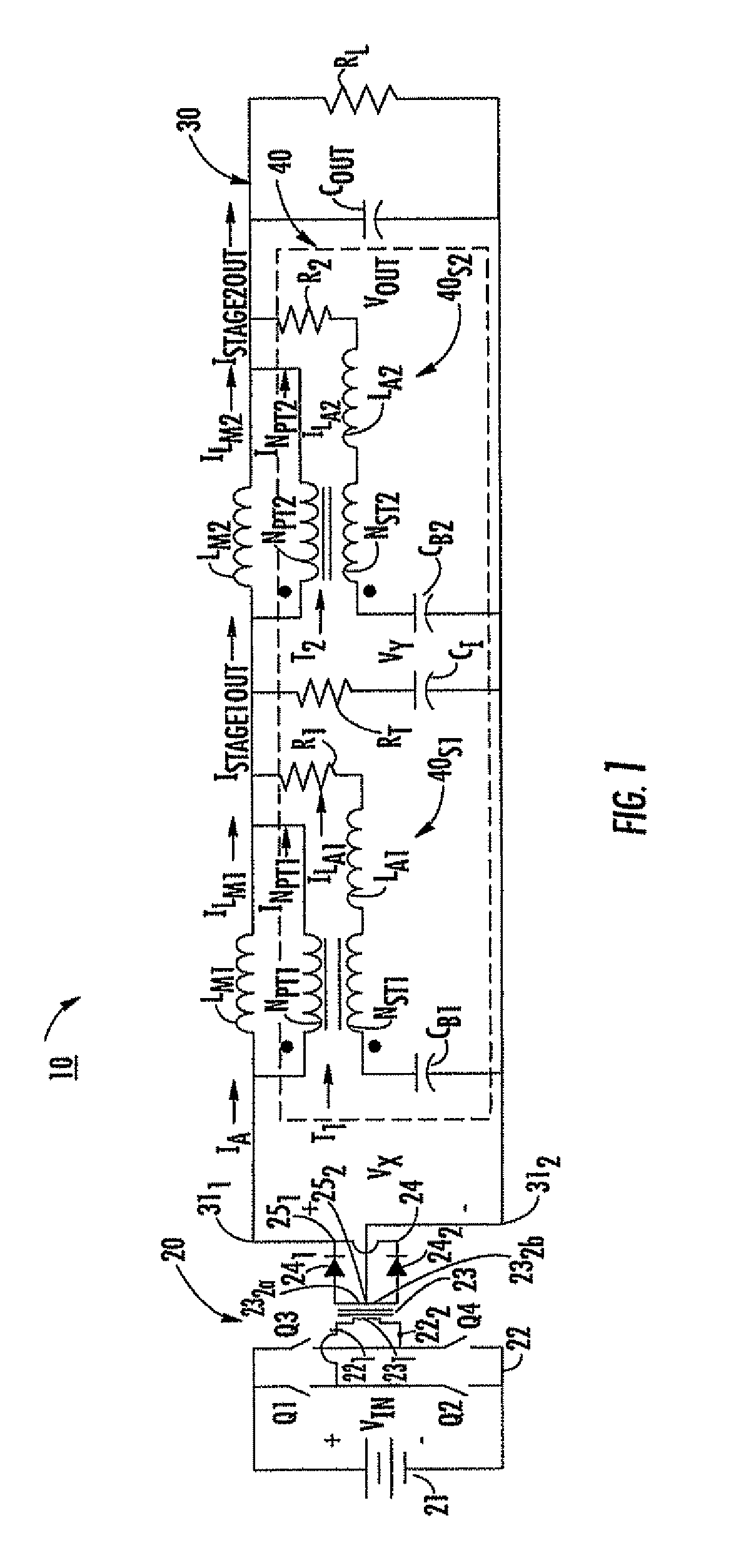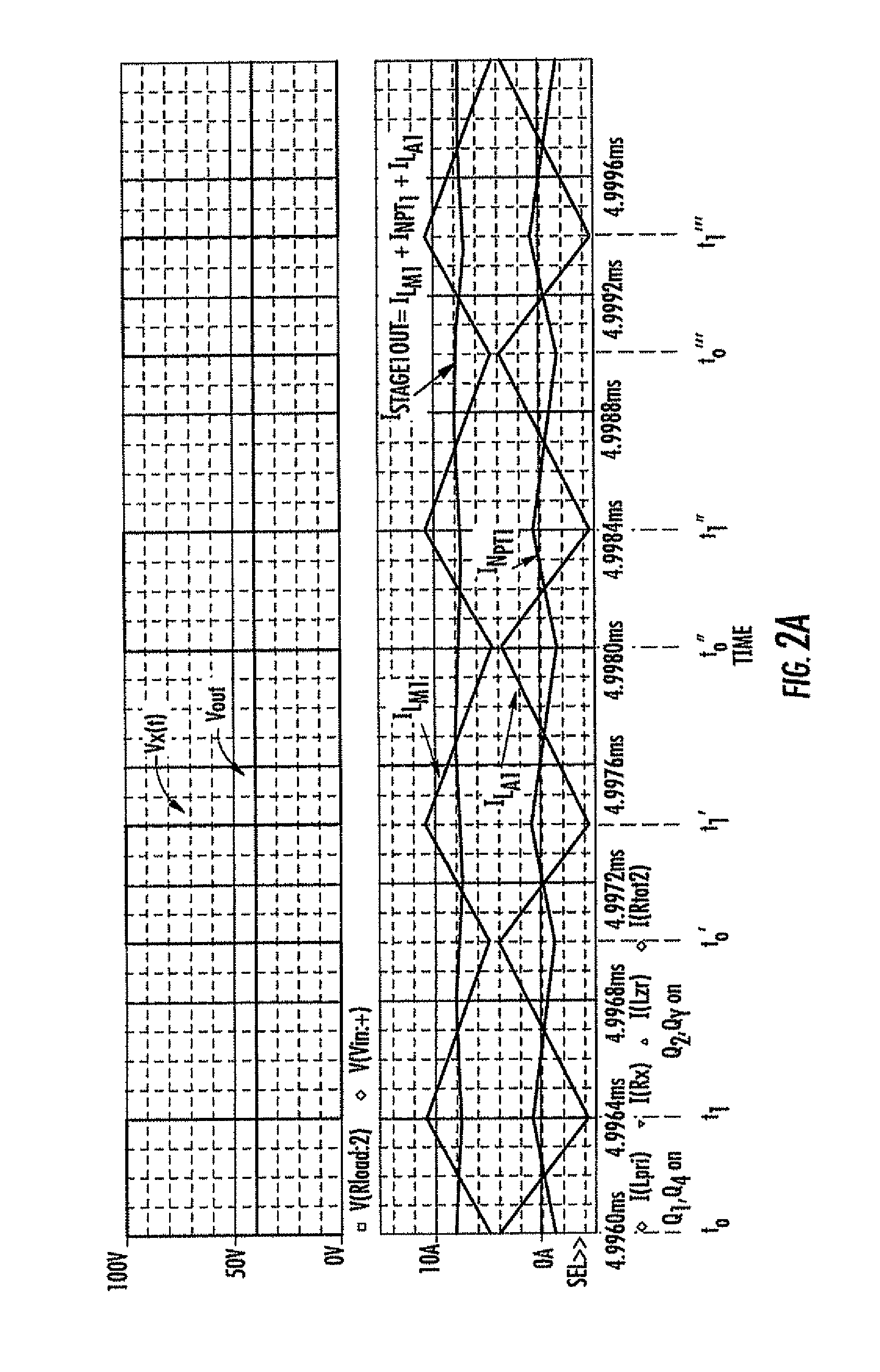High attenuation filtering circuit for power converters
- Summary
- Abstract
- Description
- Claims
- Application Information
AI Technical Summary
Benefits of technology
Problems solved by technology
Method used
Image
Examples
Embodiment Construction
[0022]FIG. 1 is a simplified schematic diagram showing an exemplary embodiment of a power converter. The power converter, denoted generally by reference numeral 10, comprises a voltage source 20 and an output filter circuit 30 including an attenuation filtering circuit 40. The switching action of the power converter connected to the voltage source 20 produces a pulsating voltage Vx(t), which is applied to the output filter circuit 30. The pulsating voltage Vx(t) includes a DC voltage component with an AC voltage (ripple voltage) component superimposed thereon. The output filter circuit 30 includes a high attenuation filtering circuit 40 for removing the ripple voltage.
[0023]As shown in FIG. 1, the voltage source 20 comprises a voltage supply 21, a phase-shifted full-wave switched bridge circuit 22, a transformer 23, and a rectifying arrangement 24. The phase-shifted full-wave switched bridge circuit 22 includes first and second tap points 221, 222 across which an alternating voltage...
PUM
 Login to View More
Login to View More Abstract
Description
Claims
Application Information
 Login to View More
Login to View More - R&D
- Intellectual Property
- Life Sciences
- Materials
- Tech Scout
- Unparalleled Data Quality
- Higher Quality Content
- 60% Fewer Hallucinations
Browse by: Latest US Patents, China's latest patents, Technical Efficacy Thesaurus, Application Domain, Technology Topic, Popular Technical Reports.
© 2025 PatSnap. All rights reserved.Legal|Privacy policy|Modern Slavery Act Transparency Statement|Sitemap|About US| Contact US: help@patsnap.com



